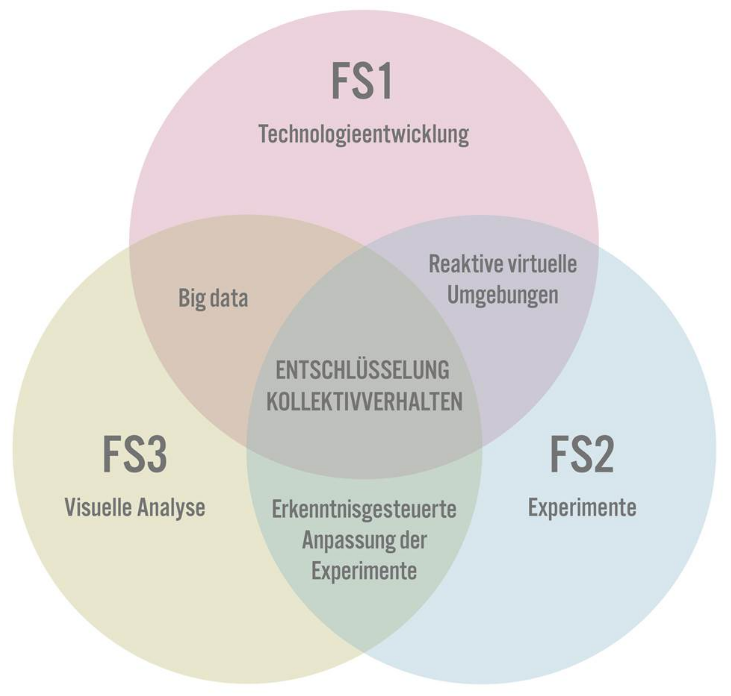Research priority 2: Embedding animals in a reactive 3D environment
Participating researchers:

In this research priority, we will conduct the proposed animal experiments using the reactive virtual environments developed in research priority 1 - these range from experiments with individual animals to experiments involving large groups of desert locusts, zebrafish and red-billed quelea. These experiments have been designed to become more complex over time and will deliver the data we need - working alongside our colleagues in research priority 3 - to decode the rules governing collective animal behaviour.
The Imaging Hangar and the Fish Labs enable us to observe the animals in comprehensively controlled environments. In these observation labs, we can do more than simply adjust the ambient light and temperature: we can project virtual environments onto the exterior walls of the aquariums and flight rooms and thereby control the stimuli the animals are exposed to, i.e. what they are likely to see. By 3D tracking the animals and analyzing the data thus obtained, we can determine the body positions of all individual animals and their field of vision (research priority 1).
Using the methods developed in research priority 1, we can also record the animals’ movement decisions in real time. We are thus not only able to determine what any individual in the group is likely to see at any given point in time, but, thanks to being able to determine its field of vision, we can also tell what it actually sees. The movement data delivers important insights into how individual animals respond to visual input. For all three main animal species, visual perception is the primary means of obtaining information about their environment.
But other sensory perceptions, such as tactile perception in locusts and acoustic perception in red-billed quelea, also play a role. These secondary sensory perceptions are also recorded during the experiments (tactile ones via camera, acoustic ones via microphones) and taken into account in the analysis. Conducting experiments in comprehensively controlled environments is essential for being able to distinguish responses to environmental cues from social influences at play in animal groups. The visual analysis methods developed in research priority 3 are key. Due to our technical capabilities, which are unique in the world, we are in a position to design entirely new experiments that are impossible to carry out by conventional means in order to uncover the relationship between the sensory input and motor output of animal groups, ultimately revealing the rules that govern collective behaviour.
